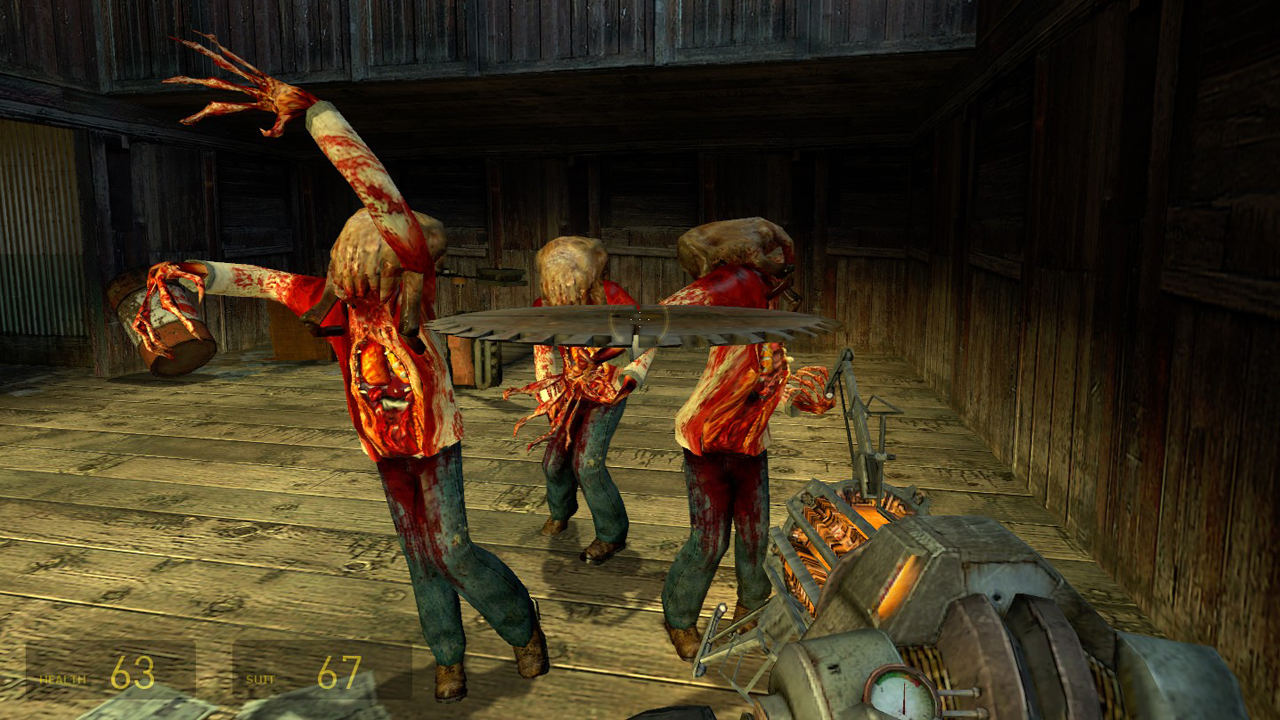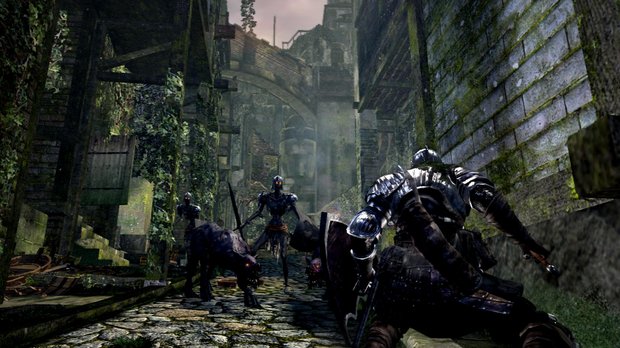Killing feels: The importance of sensation in video game weapons
In game design, the gun is a peerless tool for interaction. Able to ‘touch’ characters, objects and mechanisms near or far, simply by pointing, it’s functionally much more than a weapon. It’s the player’s force of will, extending into the game world. An invisible finger stretching out from a metal hand. For a while, in the early days of games, when simply shooting stuff was novelty enough alone, a gun simply had to go bang and kill things. As game worlds have become more nuanced and complex however, a gun’s purpose and requirements have mushroomed. It’s not simply the function of the weapon that now matters, but also its form and feel.

Game worlds are now filled with complex interactions, both prescribed and optional, which make for much richer, more satisfying exertions of player-will and creativity. There are explosives to tactically detonate. There are pieces of architecture to alter the shape of. There are new routes to open and explore. There are multitudinous ways to control space, and defend and dominate areas. In the interests of maintaining relatively streamlined and uncomplicated interface methods, weaponry has had to start wearing a great many hats. Why add more tools when you can upgrade your existing one to do more?
At this point, guns can no longer simply function as hand-held death pointers. Being more than a weapon, and instead the physical manifestation of the player’s agency in the game world, they need tactility, feedback, and the means to form a pseudo-physical relationship with the player in order to maintain a consistent sense of place and connection. With pure killing diluted in importance within the gun’s Swiss Army knife nature as catch-all interaction tool, the feel and emotional response of using it is vitally important, unless the player’s sense of presence is also to be diluted. Simply, as guns do more stuff, the physical act of using them needs to be a gameplay feature in itself, lest action games take on the feel of fast-paced point-and-click adventure games.
Think about all of your favourite shooters, and you’ll probably notice that the affecting feel of their weaponry is a common trait. That's certainly the case throughout our recent Top 100 weapons in video games. Resident Evil 4 isn’t a resounding, endlessly enjoyable classic simply because of its set-pieces and pacing. It still resonates today because every single instance of pulling a trigger, whether to the end of direct killing, evasion, crowd control, or even puzzle-solving, feels like a physical interaction between real world and game world.

The game gives the player the agency to attack its challenges with an incredibly varied, open-ended array of approaches, but the sense of physicality in its feedback is what truly makes those actions the player’s rather than Leon’s. The rattley, noisy, clattery, authoritative, heavy feel of using those guns breaks down the barrier between the player, sitting on their sofa with a controller, and the world on the other side of the screen. It gives ownership to their use within the game world, however they’re used.
That’s why iD Software’s games are so damn compulsive. If iD always gets one thing right, it’s the feel of firing a gun. Between audio design, the physical animation of the act and repercussion, and the low-latency of their weapons’ response times--under-rated by many, but utterly vital in making video game guns feel like a direct expression of the player’s intent--few other developers make moment-to-moment involvement in their combat so damn immersive and affecting. Rage is a big, beautiful, rather flawed game, but load it up and fire even its basic starting pistol into a marauding bandit’s face, and tell me it doesn’t make you grin. Tell me it doesn’t make you powerful. Tell me it doesn’t, even briefly, make you feel part of that world.
And of course, as part of the instinctive dialogue between weapon and player, the careful design of a gun’s feel can also tell its wielder everything they need to know about its use and purpose, the instant they pick it up. The nimble but meaty gait of Quake III’s railgun communicates immediately that it’s a powerful, precision weapon, and the instant, nigh-recoilless ‘Scheew’ upon firing compounds that feeling tenfold. Conversely, the sheer heft of a BFG 9000 presents a very different character profile, slammed home by the apocalyptic expulsion of each and every shot.
Weekly digests, tales from the communities you love, and more

Although most apparent in shooters, these same principles bleed through into other genres. Dark Souls is a particularly fantastic example of everything I’ve discussed above, translated into a (largely) melee context. It’s an understated but fundamental part of making its long-term, iterative gameplay exciting, fresh and engaging no matter how many times you die. Conversely, the reason that the Dead Rising games get old rather quickly, despite their vast bounty of creative melee possibilities, is that however extravagantly designed, very few of their weapons present any satisfying variation in effect or feel. .
So think about this stuff next time you’re merrily killing the crap out of the next horde of nazi-demon-zombie-terrorist-ninja-knights you go up against. If you’re having fun, kill after kill, hour after hour, with no credible end in sight, have a look down at what you’re carrying. I don’t mean the controller. Although technically more real, it’s not your true conduit into the world you’re exploring. Think about your weapon. Think about what it’s really doing; not just the killing, but how it’s killing, on a nuanced, sensory level. The chances are that your blunt object is a whole lot sharper than you think.



